Hygrometer/Weather House
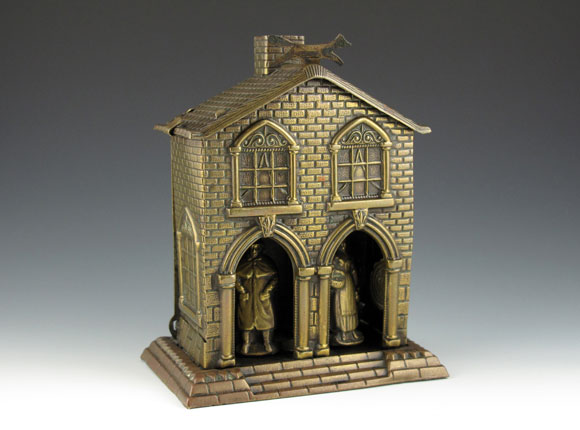
Needle Case
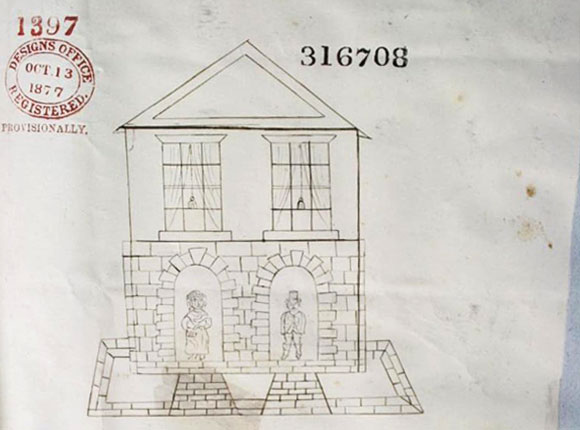
Design Representation #316708 (Provisional #1397)
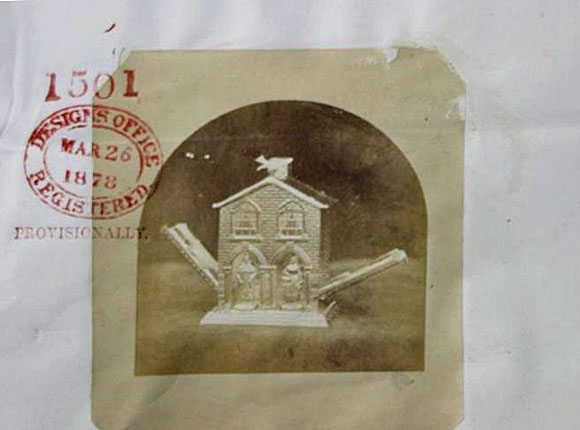
Provisional Design Representation #1501
Design Details
Needle Case Type: |
Figural |
Patent/Registered to: |
Coggins & Baxter – Birmingham |
Patent/Design Representation #: |
Ornamental Class1: Metal: #316708 (Provisional #1397 registered October 13, 1877 and Provisional #1501 registered March 26, 1878) |
Patent/Design Registration Date: |
November 28, 1877 |
Location of Patent/Design Registration: |
The National Archives (TNA) - Kew, UK |
Reference #: |
TNA Representation - BT 43/43/316708
TNA Register - BT 44/4/316708 |
Dimensions: |
6.4 x 3.8 x 7.8 |
Material: |
Brass |
Name Variations: |
a) A. Morral, Studley (note: Morral is spelled with only one "l")
b) Unmarked |
Other Variations: |
None |
Additional Photographs
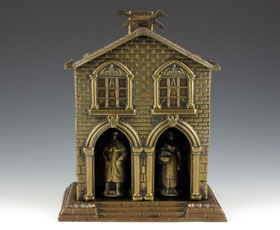
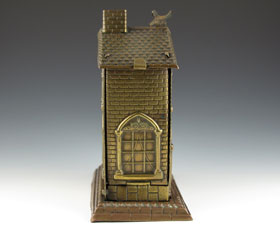
Front and side views
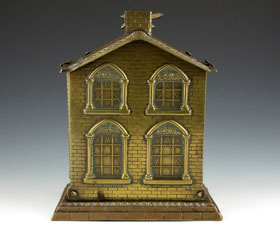
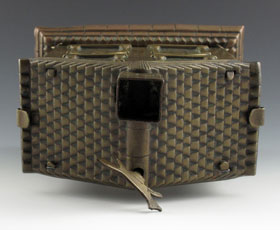
Back and top views
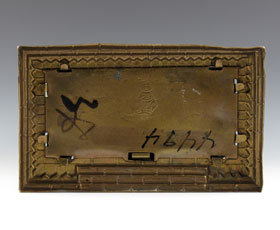
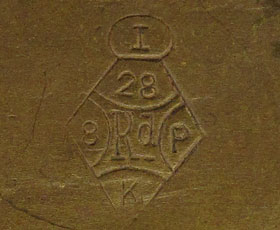
Bottom view with no signature, only the design registration mark
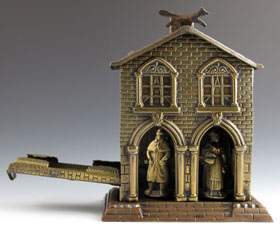
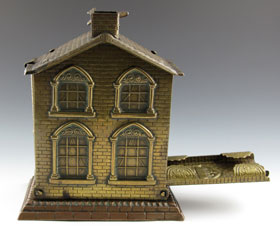
Front and back views with one side lowered
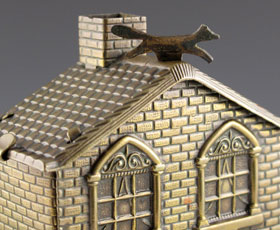
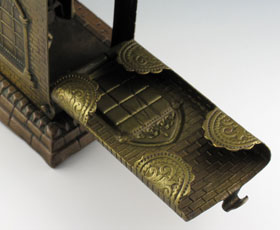
Fox weathervane and side panel details
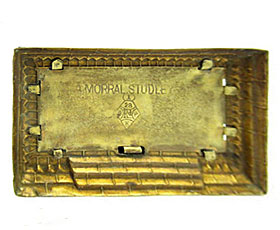
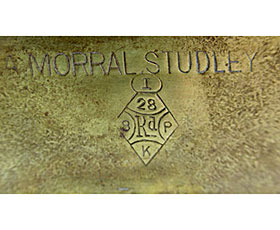
Bottom view and detail with the A. Morral Studley signature and the design registration mark (photographs from eBay)
Hygrometer Facts
A hygrometer is an instrument used to measure the amount of humidity or moisture in the air. Humidity indicates the likelihood of rain or
snow and is calculated based on temperature, pressure and electrical charge. The first practical hygrometer was invented in 1755 by the Swiss
mathematician, physicist, philosopher and astronomer, Johann Heinrich Lambert. Modern hygrometers look like the one pictured here.
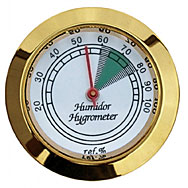
Weather House Facts
A weather house is a toy shaped like a small house with two human figures, usually a man and a woman, who indicate changes in atmospheric
humidity. According to Wikipedia, "The male and female figures ride on a balance bar, which is suspended by a piece of catgut or hair.
The gut relaxes or shrinks based on the humidity in the surrounding air, relaxing when the air is wet and tensing when the air is dry. This
action swings one figure or the other out of the house depending on the humidity.” The weather houses one sees today most often come from
southern German or Switzerland where they are popular as folk art. Click on the picture below to see a larger view of it.
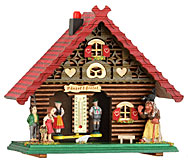
Coggins & Baxter
The company Coggins & Baxter registered six provisional designs for a hygrometer weather house pin and needle case between October 13, 1877
and March 28, 1878. Two of these were for the identical item which was also registered as the metal ornamental needle case you see on the left
side of this page. It is unclear if the other four were ever produced or if they were manufactured, what type of material was used.
Click on the drawings below to see a larger view of each design.
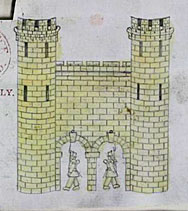
Provisional Design #1437 dated February 5, 1878
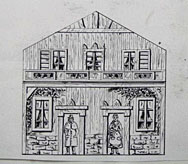
Provisional Design #1500 dated March 26, 1878
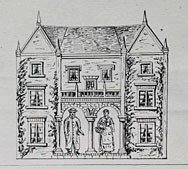
Provisional Design #1502 dated March 26, 1878
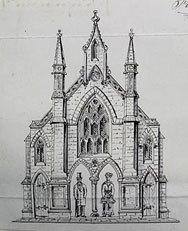
Provisional Design #1505 dated March 28, 1878

























